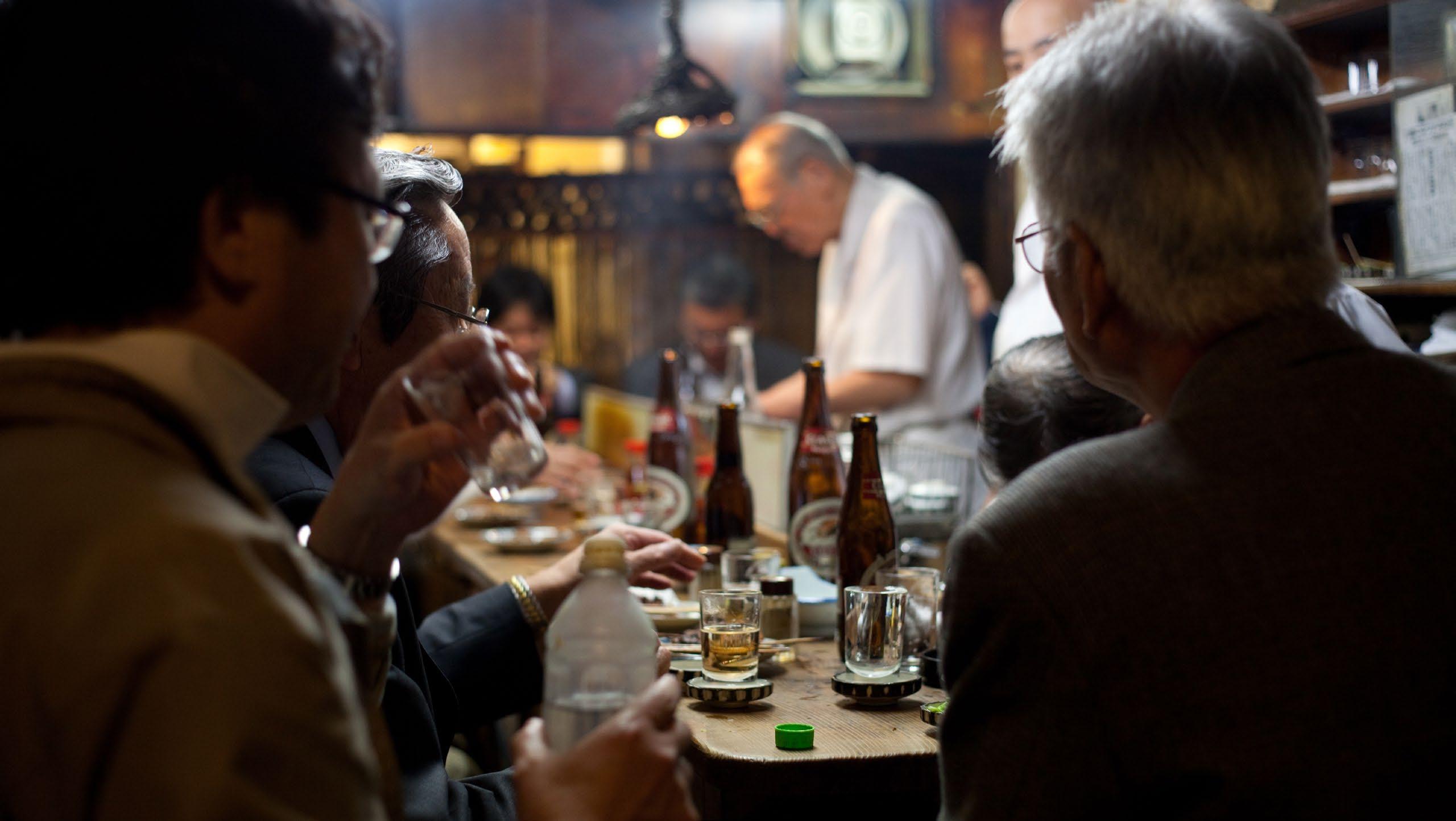Eating and drinking in Japan






Food is a huge part of travel – and it’s a powerful way to understand other cultures, people, and places.
Food is available, literally, on every corner in Japan. From restaurants at the top of the tallest Tokyo skyscrapers to tiny underground izakaya bars, where five guests would be a squeeze, and, of course, the country’s 5.5 million vending machines…
Whether you can’t wait to tuck into a steaming bowl of ramen, try out both styles of okonomiyaki (Hiroshima and Osaka fight for first place), or simply want to eat your way through convenience store treats, here’s your practical guide to Japan’s food etiquette, traditions and dishes.

Food is a huge part of how I explain Japan, because everybody has to eat! I love explaining local food culture, particularly with its links to agriculture and, therefore, how food is directly connected to the ecology and natural landscape. Like kyoyasai, a specific type of Kyoto-grown vegetables that have been produced since, or before, the Meiji Period (1869-1912). They’re packed with even more vitamins, antioxidants and fibre, compared to other veg, and even have their own section in supermarkets.”

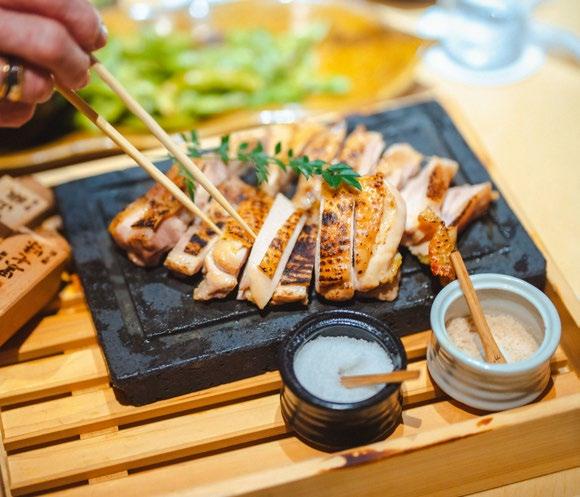
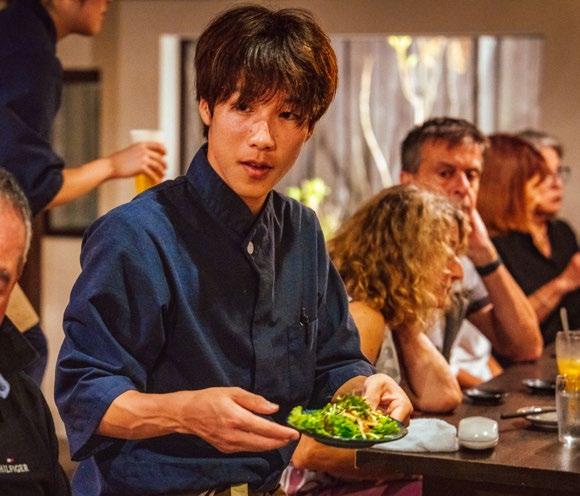

1 2 3 4

To help you know your soba noodles from your udon, and the difference between donburi and yakitori, here are a few of our must-try dishes.
From how to politely start a meal to why you should never stick your chopsticks in your rice – this is our quick-fire guide to the dos and don’ts of Japanese dining etiquette.
Sit-down meal, vending machine, conveyor belt, tickets… there’s lots of different ways to have a meal out in Japan. Here’s how to feel confident wherever you choose.
If you’ve got dietary restrictions, you can still have a delicious trip – but planning what and where you eat is particularly important in Japan. Here’s how to get started.
If you’re interested in a trip to Japan, we bet you’ve tried some Japanese food already. But our team’s recommendations come from years of living and working in Japan, so you may not have heard of everything on our top 10 list…

Probably the most famous Japanese export is sushi – but you haven’t tried the real thing until you’ve eaten sushi in Japan. At its simplest form, sushi is rice cooked in vinegar, often served with raw or cooked fish on top and sometimes rolled within seaweed. Japanese sushi is more focused on nigiri (slices of sashimi on top of rice) rather than the rolled sushi (makizushi) that’s popular abroad. Veggie options are usually available.


There’s so much more to ramen than noodles. Take a flavoursome broth with noodles cooked to perfection, add carefully selected toppings including meat, seaweed, vegetables and sometimes an egg, and you have true Japanese ramen.

A breaded and deep-fried pork dish, often served with sauce, veggies and rice or noodles. A bit like a Japanese schnitzel – and especially delicious washed down with a crisp, cold lager.


Okonomi means “what you like”, and yaki means “grilled” – this is a savoury pancake filled with meat, vegetables, or seafood.
Topped with a sweet and savoury sauce, dried seaweed, bonito flakes, Japanese mayonnaise, and pickled ginger, it’s cooked right in front of you on a hot plate.
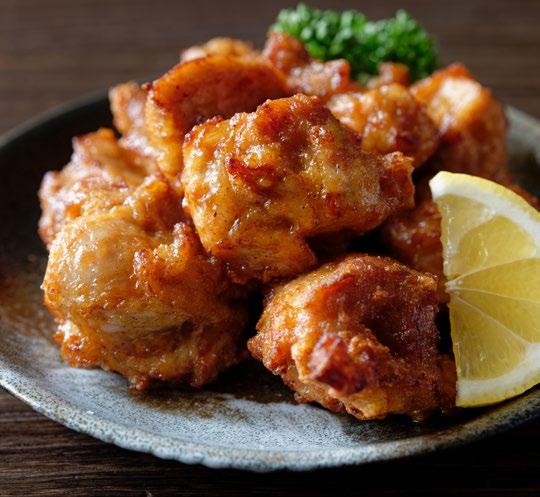
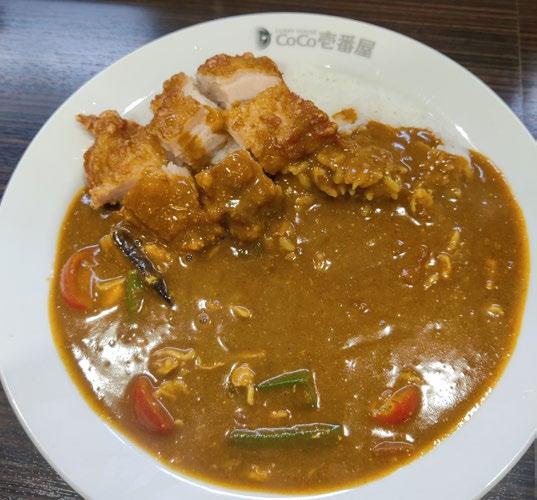
Japanese curry uses a thicker, darker sauce than the fragrant coconut milk bases of Southeast Asia. It’s served over rice, udon noodles or within a roll ( karē pan), and it’s so delicious, it’s considered one of Japan’s national dishes. You can buy the sauce in brick-shaped blocks in supermarkets, too.

Karaage essentially means deep-fried, but most commonly refers to chicken (so vegetarians and vegans, check before tucking in!) It’s a classic izakaya snack plate, best paired with an iced glass of cold beer.

Udon noodles are thick, made with wheat flour and often served with vegetables in a stir-fry dish, called yaki udon. Soba noodles are much finer than udon, and can be a great gluten-free alternative when made with 100% buckwheat. They can be served chilled, with a dipping sauce, or hot in a noodle soup.

Gyoza are Japan’s version of the dumpling. Made with a thin dough, they encase ground meat, fish and/or vegetables, and are often served with a soy-based dipping sauce. You can get vegetarian versions, too.



Nagashi somen is an unusual style of eating: where you ‘catch’ noodles with chopsticks as they make their way down a bamboo slide on a stream of flowing water. It’s a popular summer activity and speciality restaurants generally have a fun, communal atmosphere.
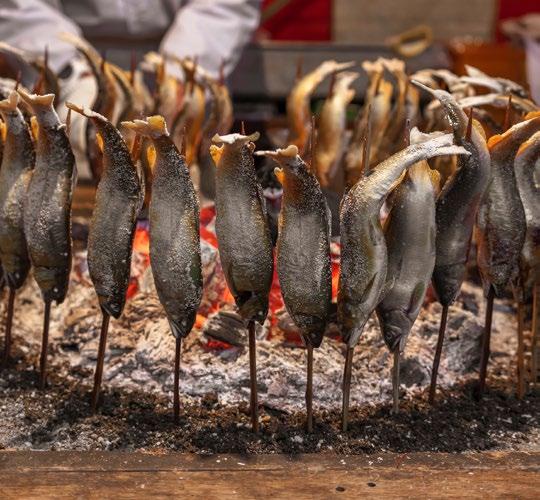
A well-known Japanese street snack of chicken skewers, marinated in a sweet and savoury sauce. Another classic izakaya bar style food.
Robatayaki (meaning fireside cooking) originates in Japan’s fishing villages, dating back to when coal cooking was still the predominant way of preparing food. Some robata restaurants will grill the food for you, with the chef handing your seafood or vegetables over on a small wooden paddle, while in others, you’ll grill the food yourself.
Each region of Japan has its own regional specialties that are worth exploring. Kyoyasai, obanzai and yuba in Kyoto, Edomae sushi in Tokyo, miso nikomi udon in Nagoya, miso ramen and soup curry in Sapporo, sanuki udon in Kagawa – and that’s naming just a few.
“There are also seasonal foods to enjoy at every time of the year, such as chestnuts and sweet potatoes in the fall, shaved ice and other festival treats in the summer, and Christmas cake in the winter. Each area and each time of year will have something different and special to offer.”

Karin Japan specialist


If you’re hungry to turn inspiration into action and start diving into Japan’s buzzing food scene, let’s talk. We’re ready and waiting to help you craft your perfect trip.

Dining in Japan is not just about nourishment –it’s a social ritual, a seasonal celebration, and, at times, a quiet performance. Meals unfold with a sense of choreography that, while not stiff, is subtly structured by centuries of custom.
For example, the small bow and polite phrases that bookend a meal ( itadakimasu and gochisousama) aren’t throwaway niceties – they express gratitude not just to the cook, but to everyone and everything involved in the meal, from the farmer to the fish.
Slurping your noodles? That’s not poor manners
– it’s a sign of enjoyment and a practical way to cool piping-hot broth. On the flip side, eating while walking is generally frowned upon. Food, in Japan, deserves your full attention.
And those chopstick taboos? They aren’t arbitrary. Sticking chopsticks upright in rice mirrors a funeral ritual, and passing food from one set of chopsticks to another evokes how bones are handled during cremation. In short: certain gestures carry weight, even if you don’t realise it.
Rather than fear getting it wrong, appreciate the fact that observing these unspoken rules offers a glimpse into the values of respect, mindfulness, and connection that run deep in Japanese culture. Plus, people are usually forgiving of foreigners who are clearly making an effort.
Here’s our quick-fire summary of the dos and don’ts of Japanese dining etiquette.
Try everything (unless you have dietary requirements)
Say itadakimasu before you eat – it roughly translates to ‘I humbly receive’
Say gochisousama deshita after your meal – a humble thank you
Lift your bowl and slurp noodles
Use chopstick rests
Expect plates to come when they’re ready, rather than in courses for the whole table
Take your own reusable chopsticks to avoid using disposable waribashi

Stick chopsticks upright in your rice
Pass food from chopstick to chopstick
Eat or drink on-the-go in the street
Mix sauces directly in your rice bowl
Lick or gesture with chopsticks
Ask for substitutions or changes to dishes
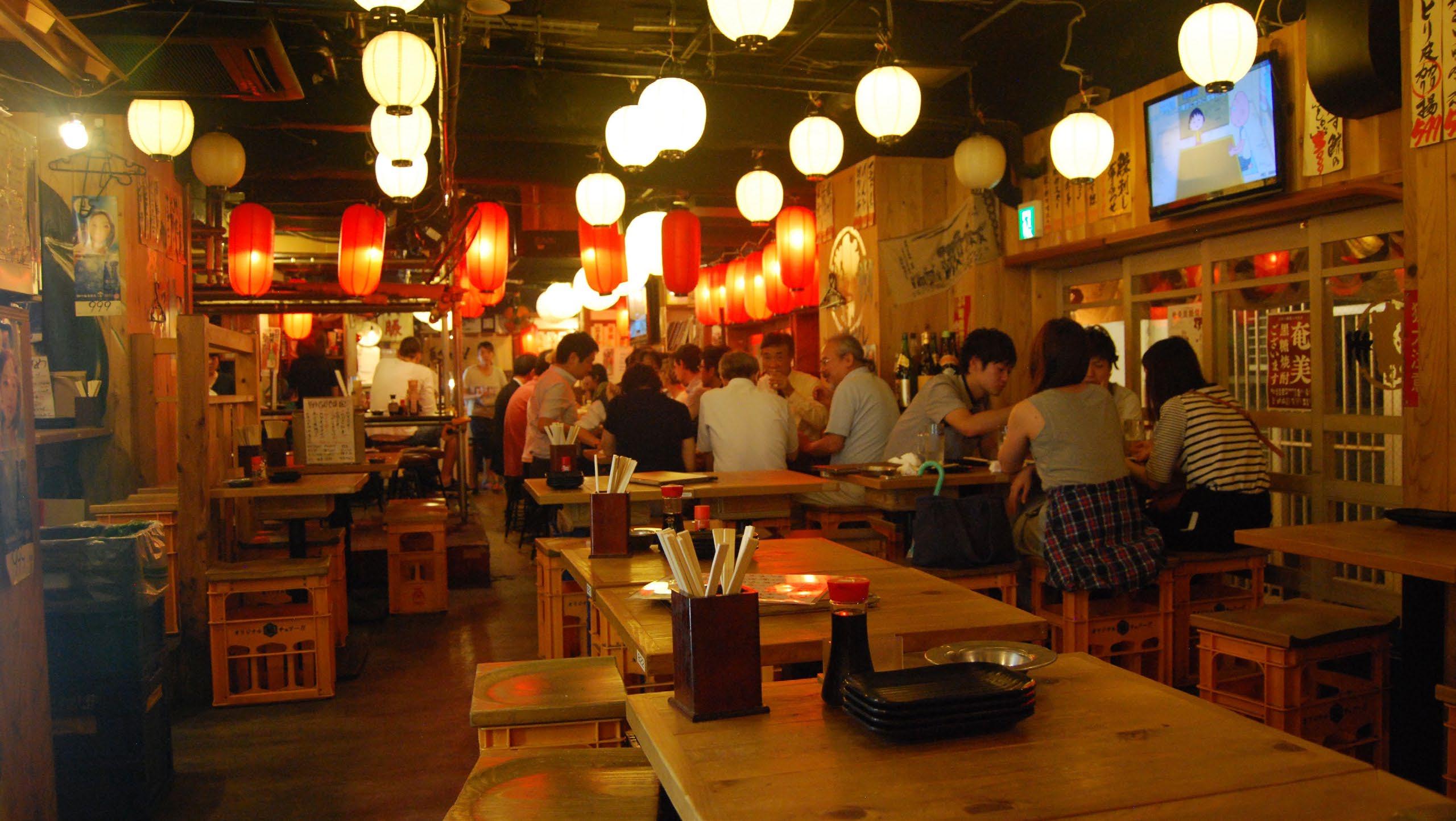
There are many different types of meals you can have in Japan – from sit-down restaurants to vending machine ramen, or an elaborate, multicourse dinner. In most towns and cities, good food can be found 24/7. So, whether you’re in a late night izakaya bar or grabbing a breakfast melon bun from a Lawson’s convenience store, you’re unlikely to go hungry for long.
Japanese people go out to eat a lot – and sharing dishes over a few beers is a popular way to catch up with friends in Japan. If you’re travelling alone, dining solo is very normal, particularly in places like sushi bars. You may find busy workers doing the same, rushing meals between meetings. It’s a good way to people watch! Where speed is of the essence, some restaurants use a ticket vending machine to process swift ordering and payments.
Two concepts that are very common in Japan are omakase and kaiseki. Omakase translates to “I leave it up to you” – and means you relinquish control to the chef, allowing them to showcase their skills. Kaiseki refers to the traditional, multi-course dining experience you’ll often experience at ryokan inns, and consists of a sequence of small, carefully presented dishes, focused on seasonal ingredients.
A queue and happy diners usually means the food’s worth the wait! If you want to be sure, check Tabelog – Japan’s top restaurant review site. Locals use it instead of Yelp or Google. A score above 3.0 means good. You’ll also find opening times, menus, and booking policies there.
Japanese restaurants typically specialise in a single cuisine (sushi, curry, yakitori, etc.), so choose based on what you’re in the mood for.




This is no different to how you expect to sit and pay in restaurants. Enjoy your meal, get a bill and pay at the end (either at the table or at a register near the entrance). Miso soup will often come as part of a set meal, and some restaurants offer green tea or soy sauce as standard on the table.
This can be a great way to eat side-by-side with locals on the street in bigger cities. There’s often a huge variety of things to try, but it may be tougher with a dietary requirement, particularly if crosscontamination is a concern for you.
There are several chain restaurants that offer conveyor belt sushi. Picking up dishes as they flow past, and paying at the end, is a concept you may be familiar with. In Japan, conveyor belt sushi is popular – made using local ingredients. You may find some unexpected and delicious variations.
These bar, or pub, style spots are great for a drink and small plates – with lots of variety on offer. They’re popular as an after work hang out spot for locals, so grab a seat and cheers your fellow diners.
If you’re at a ryokan that provides yukata robes, it’s quite normal to wear these to meals too. You’ll see Japanese guests doing it!”

Mark Japan specialist

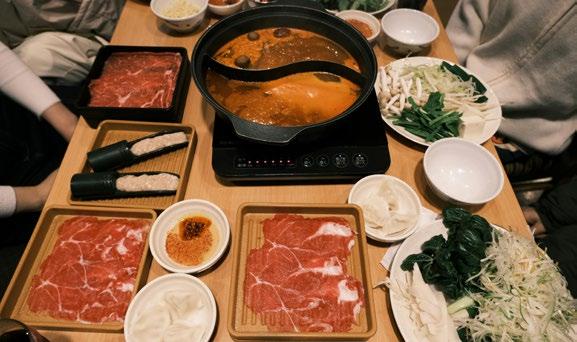
Staying in a traditional ryokan inn is an incredible experience, with equally impressive kaiseki meals (though you’ll find kaiseki elsewhere, too). Often with over 10 small courses, each is carefully considered and prepared with seasonal ingredients. Staff will lay out a tray with lots of different ceramic dishes and wooden boxes, containing different components of your meal, refreshing it for each course.
Shabu shabu (Japanese hot pot) restaurants are a communal and interactive experience – where you’ll cook thinly sliced meat and vegetables in boiling broth at the table. The name shabu shabu is onomatopoeic: it refers to the ‘swish swish’ sound that ingredients make as they’re stirred in the pot.

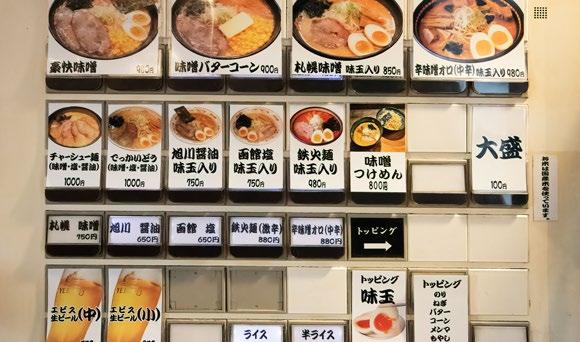
Family restaurants ( famiresu) are casual, familyfriendly chains like Gusto, Royal Host, and Denny’s that serve a mix of Japanese and Western dishes, with some specialising in specific cuisines such as hamburger steak or Italian. They’re easy for foreigners to navigate thanks to illustrated, often bilingual menus and Western-style seating, plus a call button at the table to summon staff. Many locations are open 24 hours, offering convenience alongside a relaxed atmosphere.
Instead of choosing from a menu or stating your order to the chef, some places have a vending machine style system that you order through instead. Choose your meal, make your payment and you’ll be given a ticket you hand to the chef or server. Then, sit back and wait for your food.
Remember to use your Google Translate photo function to make sense of the screens if things aren’t in English.
When it comes to dining in Japan, inexpensive doesn’t mean low quality or inauthentic. Dining out is great value – and food is usually treated with the same reverential approach for fresh ingredients, great taste and beautiful presentation, even at the lower end, that you might expect somewhere like France or Italy. For visitors, that usually means that letting chance take over some nights doesn’t mean you’re gambling on a terrible dining experience.”

Kate Japan specialist

We love a good convenience store (or konbini ). FamilyMart, 7/Eleven and Lawson are the golden three – you’re usually no more than a five-minute walk away from one at any time in any city, and there’ll be at least one in even the most remote of locations (like Mount Koya, or at the base of Mount Fuji, Shizuoka).
From a delicious onigri (rice ball) to tide you over until dinner or hot kare-pan (curry bread rolls) to warm a cold walk, to a huge variety of beers and soft drinks, the list of ready-to-eat snacks goes on. Insider Chantel shares her favourite things about konbini in this blog.
When I’m in Japan, I always head straight for the dining floors of department stores and shopping centres – and especially the areas around train stations. These spots are surprisingly reliable for finding good, affordable meals.
“Near stations, you’ll find casual restaurants packed with office workers unwinding over dinner or grabbing a solo bite, while shopping centre eateries cater more to families and couples looking for something nice after a day out. Don’t picture a food court with trays and plastic forks – these are proper sit-down restaurants, often with impressive quality.
“Most places specialise in just one type of dish – ramen, curry, sushi – so the trick is to decide what you’re in the mood for before you start browsing. And it’s easy to browse: many buildings have illustrated floor guides with photos of each restaurant’s menu, so even if you don’t read Japanese, you can follow your cravings.
“One of my favourites is the ramen “street” in Kyoto Station – a collection of shops serving styles from all over Japan. And if I’m just after something quick and comforting, I’ll hit up Marugame Seimen, a no-frills udon chain where a steaming bowl of fresh noodles and crispy tempura rarely sets me back more than 800 yen. Good food doesn’t have to be expensive here – my old roommate in Yokohama used to eat out every night and still spent less than I did cooking at home!”

Karin Japan specialist


The culture and common practice around reserving restaurants is very different in Japan than it is in the west.
Most casual restaurants don’t require – or even accept – reservations, whereas high-end or small places often do. Look out for department stores, train stations, and shopping centres for a wide range of goodquality dining options.
If you do secure a booking, note that Japan takes reservations seriously – a booking is more like a promise. The chef and their team may purchase and prepare ingredients specifically for the number of diners that day or week and cancelling a reservation at short notice can mean the food is wasted. For that reason, last-minute cancellations can incur a 50–100% fee.
It’s worth noting, too, that many restaurants don’t accept bookings from travel agents or foreign visitors directly. Hotel concierges are the best place to look for help: they often have links to local restaurants and can make up-to-date recommendations. InsideJapan offers tools and guidance, too.
While in some restaurants you’ll pay at the end of your meal, it’s not always the case in Japan.
At izakaya, it’s common to order more food and drinks as you feel like it, with the restaurant updating your bill to pay at the end. In some smaller ramen restaurants, you pay as you order (see the ticketing system above.) Sometimes, in more casual restaurants, you’ll take your bill to the front at the end of the meal and pay there, rather than paying at your table with the server.
Tipping is generally not done in Japan. Service levels are very high, and staff are paid well for their work, so no tip is needed. If you leave money as a tip, in some cases staff will chase you to return it.


Planning your trip carefully when you have dietary requirements is particularly important in Japan. Common allergies and dietary preferences, like being vegan or gluten-free, are not as common as in the west, and will take some explaining. You can absolutely eat well in Japan with dietary restrictions – it just takes more planning.
Here’s what to keep in mind:
• Substitutions are uncommon
• Vegetarian/vegan options often include fish-based dashi
• Gluten-free soy sauce (tamari ) is rare – bring your own
• We offer bilingual dietary cards to help communicate restrictions
• Kosher and halal food is limited – but we can assist with specific recommendations.
As with many countries, finding something to eat with dietary requirements in bigger towns and cities is easier.
In smaller towns, and in more traditional accommodation, things may be more difficult.
Ryokan (traditional inns) and minshuku (Japanese style bed and breakfast) may be less flexible that you think. Here, food is often considered a true expression of a chef’s creativity and skill, using ingredients that are carefully sourced. It can be considered rude to ask for changes, so it’s important to be aware in advance.
If you let us know ahead of time, we’ll provide a bilingual sheet explaining allergies or dietary requirements as part of your departure pack, which can go a long way to avoiding anything you need to steer clear of. And don’t underestimate the power of Google Translate – it can translate voice, text or images – so you can check packets and menus with a few taps on your phone.
If we're planning your trip, it's really important that we know about any dietary requirements you have - it'll help us make sure you get the very best of your experience. The earlier you let us know, the better!

“I don’t eat meat.”
- Niku wa tabemasen (肉は食べません)
“Does this contain fish?”
- Kore wa sakana ga haitte imasu ka
(これは魚が入っていますか?)
Gluten is in a lot of traditional Japanese recipes, so it can be harder to avoid. Soy sauce is traditionally not gluten-free, for example. But, if you research and prepare, things can go a lot more smoothly. Downloading Google Translate and apps like ‘Find Me Gluten Free’ are a great start, along with bringing a few snacks or your own gluten-free soy sauce. Tamari or gluten-free soy sauce aren’t household staples in Japan and won’t be available in restaurants, so it’s a good idea to bring your own. For travellers who are coeliac, it can be harder (but not impossible).
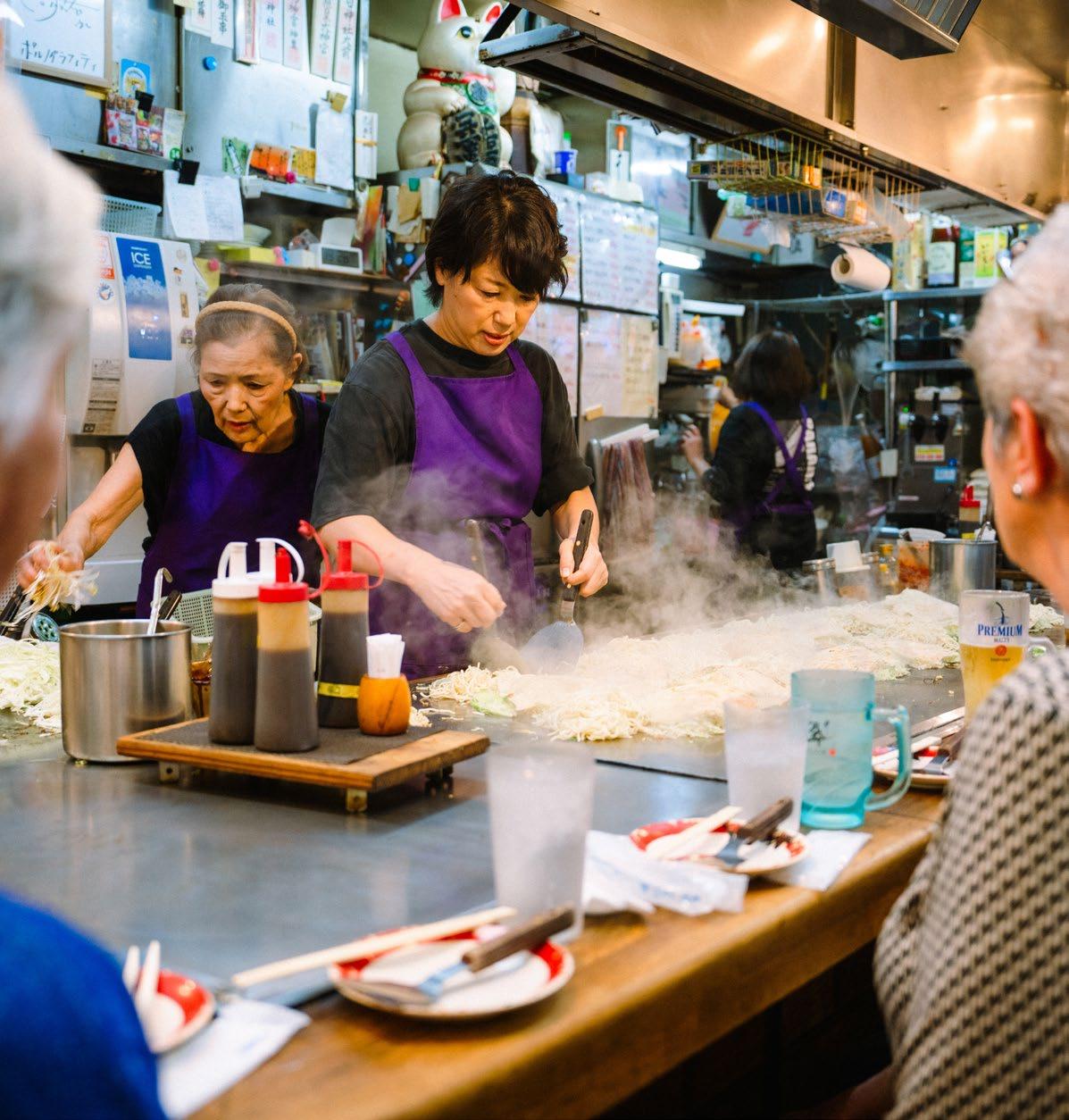
Depending on where you travel, vegetarianism isn’t common or universally understood in Japan – but if you show your dietary sheet or Google Translate, you’re likely to be understood pretty fast.
One key watch out is to be careful about dashi (a savoury stock made from umami-rich kelp and dried bonito (fish) flakes which are added as the base to lots of dishes. It can be hard to avoid (some vegetarian clients choose to eat dashi for convenience during their trip), but not impossible, as long as you’re aware of it. Some options to explore include:
• Vegetarian sushi, like cucumber, pickled radish, or sweet gourd rolls
• Natto maki (fermented soybeans)
• Vegetarian okonomiyaki, curry or ramen - some specialist restaurants offer veggie menus (be sure to double check!
• Restaurants labelled as 'macrobiotic' often have vegetarian or vegetable-forward menus, too.
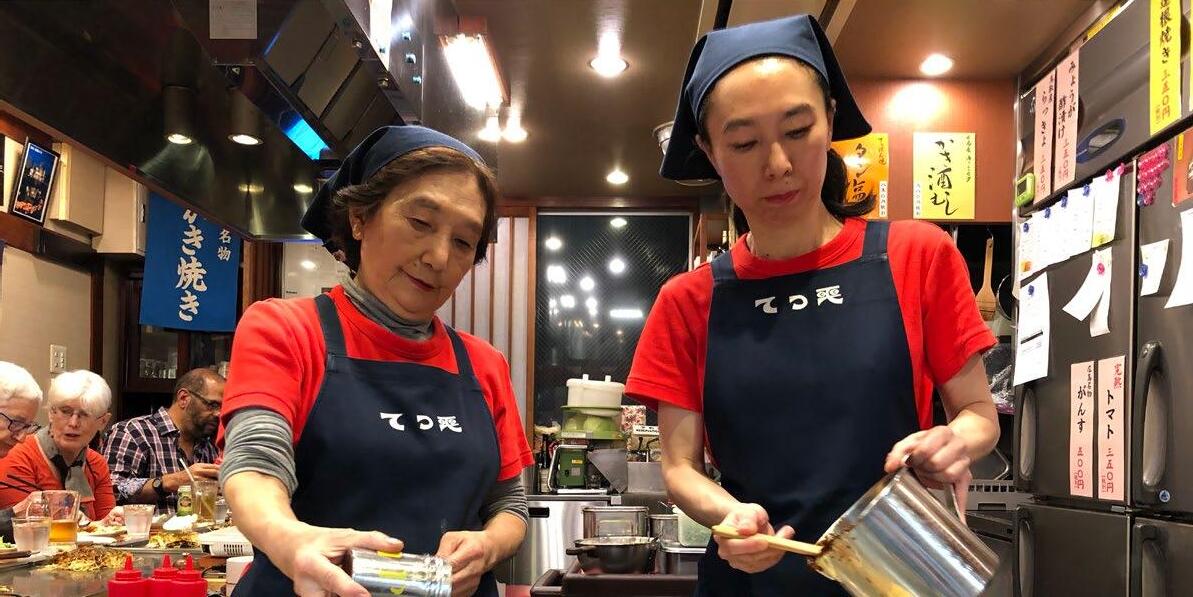
As a vegetarian who lived in Japan for many years, I can’t count the number of times I was asked something like “Do you eat ham?” – so make sure you’re crystal clear about what is and isn’t possible for you!”

Karin Japan specialist
Veganism is a less well-known concept and is completely unknown in some places. As with all dietary requirements, with a handy vocab card, working meals out can be a lot easier. Apps like HappyCow can also be handy for tracking down a vegan meal. Again, remember to check for dashi in dishes.

As
a vegan myself and having lived in Japan for many years, I can say that, while it’s definitely possible for vegans to eat, and to eat really well, it’s really important to manage your expectations. It’s not a foodie heaven for vegans – and sometimes you’ll have to get creative. We can help you do that.”

Ali Japan specialist
Dairy products are rarely used in most dishes and if they are, it’s usually very clear. Remember to get your Google Translate or your vocab card out if you’re not sure.

Halal dining in Japan is still limited, with relatively few certified producers and restaurants. Many establishments that describe themselves as “halal” or “Muslim-friendly” may serve alcohol or prepare halal and non-halal dishes in the same kitchen. While some offer separate halal menus, strict observance can vary.
Eating halal in Japan was a lovely experience. While options were limited, I discovered some amazing halal-friendly restaurants in the bigger cities like Tokyo and Kyoto. There are many restaurants that cater to Muslim travellers, which are halal certified or offer clearly labelled menus and prayer facilities. I felt warmly welcomed wherever I went and the restaurant were always happy to cater to my various dietary requirements

Shipa Inside Travel team
Kosher food can be tricky to navigate in Japan. Certified kosher restaurants are extremely limited, and even everyday items like bread or snacks may contain animal products or be made using shared equipment. On top of that, ingredient lists are usually in Japanese, so it can be hard to check what’s what without help. If you keep kosher, it’s best to plan ahead – and we’re happy to offer advice or help track down options that work for you.


Google Translate has become very good at live translation from pictures so we recommend this as a good option when looking at labels in konbinis. Japan legally requires that these seven allergens are labelled on food:
• Buckwheat (蕎麦/そば)
• Crab (カニ)
• Egg (卵, たまご)
• Milk ((乳)
• Peanuts (落花生/ピーナッツ)
• Shrimp (エビ)
• Wheat (小麦)
As part of our service, we provide dietary sheets with relevant information in Japanese to show restaurant staff, which makes it easier to understand whether they can accommodate your requirements. Just let us know when you’re booking, and we’ll sort everything out in advance.
